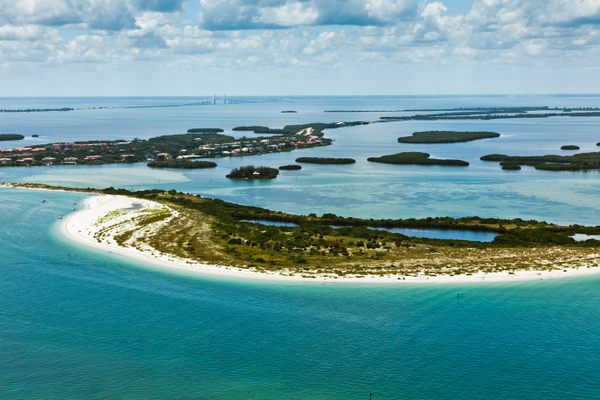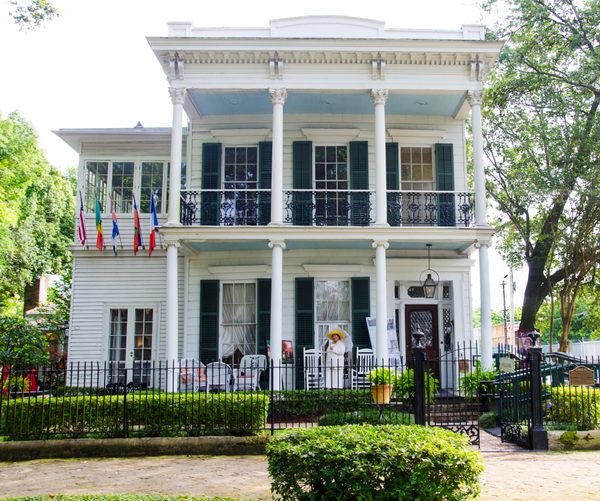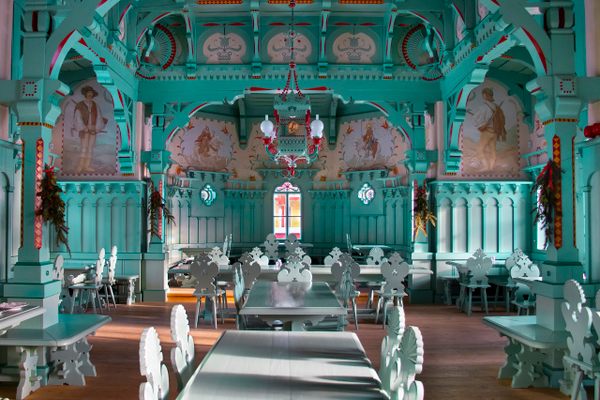Fort De Soto Park in Tierra Verde, Florida
Fort De Soto Park spans over 1,000 acres of five interconnected islands that create a bayou between the Gulf of Mexico and Tampa Bay. It's the largest park in the county and it offers beautiful beaches and outdoor activities from camping to kayaking to wildlife watching. But there's also a deep history here, which is reflected in the park's name. At the end of the 19th century, with the start of the Spanish–American War, there were calls for increased coastal defense around Tampa. This came in the form of a set of fortified buildings on Mullet Key, which was named for the 16th-century explorer Hernando De Soto. The fort consisted of 29 buildings, built over six years, which included barracks, a hospital, stables, a mess hall, a bakehouse, workshops, and more. Today, you can visit Battery Laidley, the primary mortar battery that defended the fort, which is home to the last four surviving carriage-mounted, 12-inch seacoast mortars in the continental United States. The secondary battery, Bigelow, was destroyed in a hurricane in 1921, but left behind a pair of three-inch Driggs-Seabury Model 1898 rapid-fire guns, which were used to stop smaller vessels from attacking the area. The remaining mortars are the only of their kind in North America. The post buildings eventually fell into disrepair, and many were destroyed by storms. In the 1990s, with help from historical photos and government records, the original Quartermaster Storehouse was rebuilt and turned into a museum. Inside, visitors can learn about the post’s quartermaster’s supplies, the early history of the Tampa Bay area, and how the Spanish–American War affected the region. Today you're more likely to find people fishing, camping, or relaxing on the beaches of Fort De Soto Park, rather than scanning the horizon for enemy ships. It's all part of the diverse story of this fascinating place.


Fort De Soto Park spans over 1,000 acres of five interconnected islands that create a bayou between the Gulf of Mexico and Tampa Bay. It's the largest park in the county and it offers beautiful beaches and outdoor activities from camping to kayaking to wildlife watching. But there's also a deep history here, which is reflected in the park's name.
At the end of the 19th century, with the start of the Spanish–American War, there were calls for increased coastal defense around Tampa. This came in the form of a set of fortified buildings on Mullet Key, which was named for the 16th-century explorer Hernando De Soto. The fort consisted of 29 buildings, built over six years, which included barracks, a hospital, stables, a mess hall, a bakehouse, workshops, and more. Today, you can visit Battery Laidley, the primary mortar battery that defended the fort, which is home to the last four surviving carriage-mounted, 12-inch seacoast mortars in the continental United States.
The secondary battery, Bigelow, was destroyed in a hurricane in 1921, but left behind a pair of three-inch Driggs-Seabury Model 1898 rapid-fire guns, which were used to stop smaller vessels from attacking the area. The remaining mortars are the only of their kind in North America.
The post buildings eventually fell into disrepair, and many were destroyed by storms. In the 1990s, with help from historical photos and government records, the original Quartermaster Storehouse was rebuilt and turned into a museum. Inside, visitors can learn about the post’s quartermaster’s supplies, the early history of the Tampa Bay area, and how the Spanish–American War affected the region.
Today you're more likely to find people fishing, camping, or relaxing on the beaches of Fort De Soto Park, rather than scanning the horizon for enemy ships. It's all part of the diverse story of this fascinating place.
What's Your Reaction?




























:quality(85):upscale()/2024/01/25/878/n/1922153/f94f61ec65b2bf18018990.47538761_.jpg)

:quality(85):upscale()/2024/01/26/751/n/1922153/6bd241b765b3e57a0c5559.91495665_.png)
:quality(85):upscale()/2024/01/26/759/n/29590734/b7f6660b65b3e8460d7196.77057039_.jpg)












